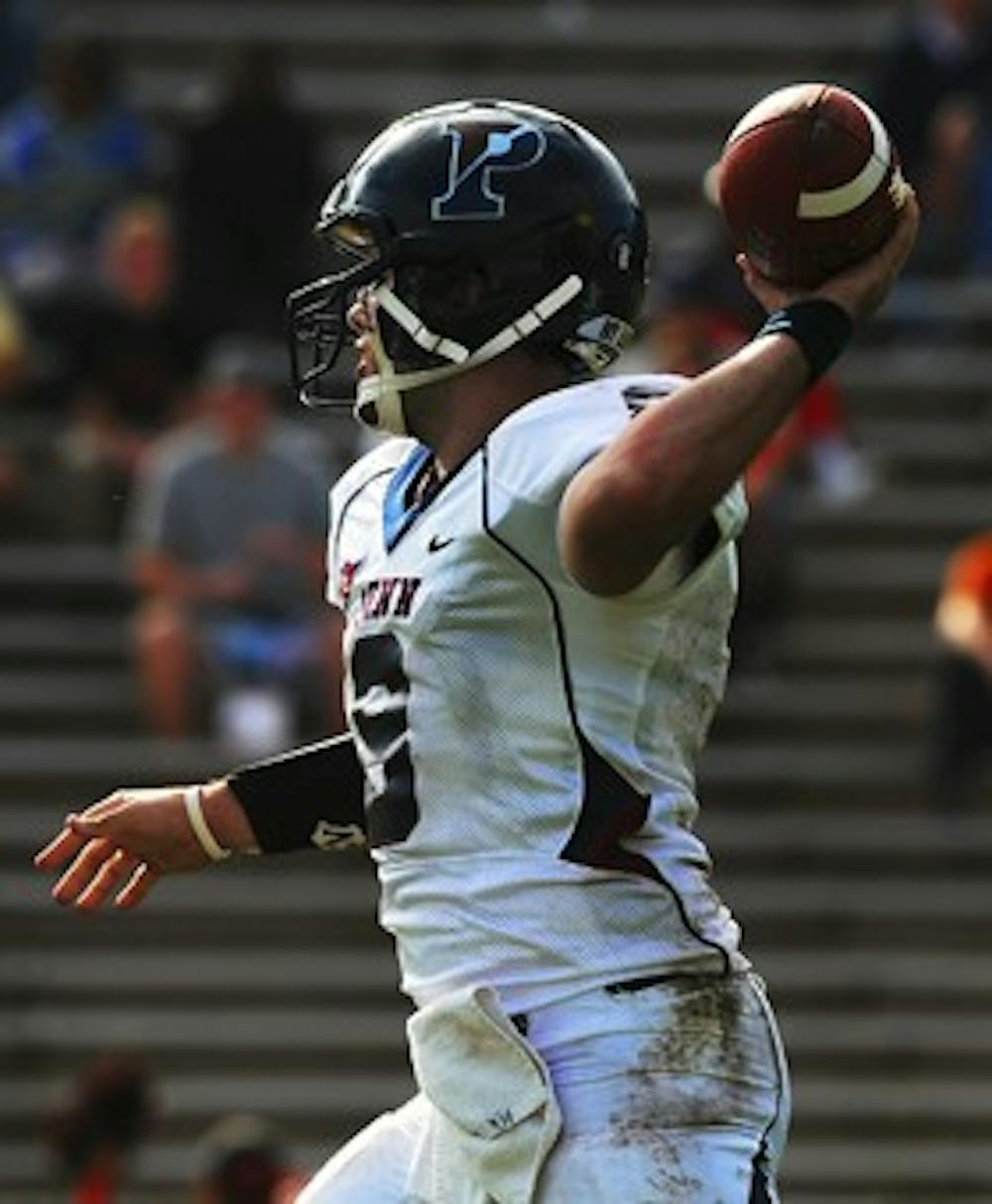
PROVIDENCE, R.I., Oct. 31 —
Something seemed to be missing from the Penn offense early on in Saturday’s game against Brown.
It wasn’t anything out of the ordinary. The Quakers started with two pass plays — both completions, one for a first down — followed by three run plays and then an incompletion on third down.
Pretty normal stuff. That is, unless you’ve been paying close attention to Penn football this season.
Absent from the offense in the early going was any sign of the wildcat/“slash”/direct-snap/whatever-you-wanna-call-it formation the Quakers have added this year, which features running backs and wide receivers lining up under center.
Instead, coach Al Bagnoli made the smart decision to abandon his new dynamic offense and revert to the old days of airing it out with the quarterback.
With traditional pocket passer and experienced senior Kyle Olson leading the charge again — rather than injured starter and mobile quarterback Keiffer Garton — Bagnoli’s strategy to focus his attack on Brown’s Ivy-worst pass defense proved crucial to the Quakers maintaining their perfect conference record.
* * *
In the days leading up to Saturday’s showdown in Providence, much of the talk surrounded the need for Penn to score more in order to keep pace with Brown’s explosive offense.
“We’ve been moving the ball well on offense, but we haven’t been really putting points on the board,” sophomore running back Matt Hamscher said before the game. “The offense has come into this week with a little different attitude, a little more sense of urgency to make plays.”
This begs the question: why would you stray from the offensive identity you’ve been establishing all season, right at the time when you needed to score more than ever?
Well, how about facing a defense that entered the game dead last in the Ivy League, allowing 243.7 passing yards per game on 67.7 percent completions. Compare that to the Bears’ third-best run defense that was giving up just 98.3 yards per game on the ground, and Bagnoli’s gameplan was practically a no-brainer — even when you factor in Penn’s second-best Ivy rushing attack and its League-worst pass offense.
“Commend the coaches for putting the ball in the air more this week,” Olson said.
* * *
Not only did abandoning the wildcat take advantage of a favorable matchup, but it also caught the Bears a bit off guard. Although Brown coach Phil Estes denied it — “Olson’s not the runner, he’s a thrower,” he said. “We expected them to throw. I mean, that’s what he does.” — he at least admitted that they weren’t expecting such a pass-heavy attack with no wildcat.
The Quakers did go to the direct snaps with Bradford Blackmon three times in the second quarter and on five plays overall, but the formation saw little success.
In the end, Penn threw the ball 12 more times than it ran, which was by far the most lopsided ratio towards the pass all season. Olson tallied a career high 313 yards through the air — the most for a Penn quarterback since Bryan Walker’s 339 yards against Brown on Oct. 27, 2007.
And credit Bagnoli for sticking to his guns in overtime after Olson threw four interceptions (also a career high) in the second half. Two quick strikes to Kyle Derham gave Penn its first overtime victory and first defeat of Brown since 2004.
All because Bagnoli passed on the wildcat — and the Bears.
Noah Rosenstein is a junior political science major from Hollywood, Fla., and is Sports Editor of The Daily Pennsylvanian. His e-mail address is rosenstein@dailypennsylvanian.com.
The Daily Pennsylvanian is an independent, student-run newspaper. Please consider making a donation to support the coverage that shapes the University. Your generosity ensures a future of strong journalism at Penn.
DonatePlease note All comments are eligible for publication in The Daily Pennsylvanian.




